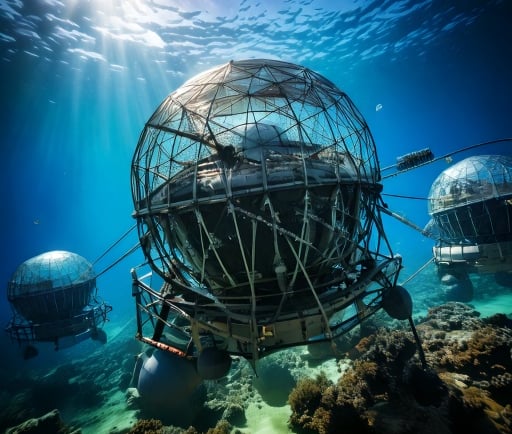KM3NeT: The Underwater Neutrino Telescope


The Underwater Neutrino Telescopes
The study of subatomic particles has seen significant advancements, especially in the field of neutrino detection. The KM3NeT (Cubic Kilometre Neutrino Telescope) project located in the Mediterranean Sea represents a monumental leap in this ongoing scientific quest. This underwater neutrino telescope aims to detect high energy neutrinos, which are elusive particles that hold the key to understanding some of the universe's most intriguing phenomena.
The KM3NeT Project: Overview and Objectives
KM3NeT is designed to provide an expansive underwater observatory that can explore the mysteries of cosmic events, such as supernovae and gamma-ray bursts. By capturing high-energy neutrinos generated by these celestial events, KM3NeT helps scientists gather data that could potentially explain fundamental questions about the universe, including its origin and the forces that govern it.
Strategically positioned in the deep waters of the Mediterranean, the KM3NeT infrastructure consists of a network of high-tech optical sensors arranged in various configurations beneath the sea. These sensors are crucial for detecting the faint flashes of light produced when neutrinos interact with the surrounding water. These interactions are rare but provide insight into the energy and sources of the neutrinos as well as the high-energy processes occurring in the cosmos.
Scientific Significance and Future Implications
The implications of the KM3NeT project extend beyond merely detecting subatomic particles. High-energy neutrinos serve as unique messengers, allowing physicists to investigate extreme astrophysical processes and search for dark matter, which remains one of the most elusive components of our universe. As this project ramps up its observational capabilities, it is expected to contribute significantly to the existing knowledge in particle physics, astrophysics, and cosmology.
Moreover, advancements in technology and unprecedented data collection techniques employed by KM3NeT could lead to future innovations in particle detection. As the array of sensors becomes more sophisticated, large-scale collaborations and shared research will enable scientists globally to harness the collected data, opening doors to new paradigms in science and understanding.
Conclusion
In conclusion, the KM3NeT project stands as a testament to human curiosity and technological prowess. Unraveling the mysteries of high energy neutrinos through this underwater telescope unveils opportunities for groundbreaking discoveries in the fundamental laws of the universe. As we deepen our understanding of subatomic particles generation, the insights gained through KM3NeT may one day revolutionize our perception of the cosmos, demonstrating the vital role such initiatives play in the advancement of science.
